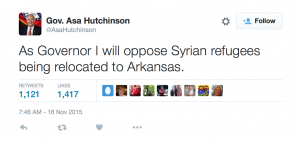By ANABELLA ZAMBRANO
At the age of 25, Nadia Murad is using her experience and losses to fight against ISIS and is now a winner of the 2018 Nobel Peace Prize.
Murad testified before a U.S. Senate committee in Washington in 2016, the world discovered and learned about her horrific experience.
The unexpected happened when ISIS militants kidnapped, enslaved and raped her in Mosul in 2014 while she was a high school student. Her mother along with six of her nine brothers were executed by ISIS militants.
“Nearly 6,500 women and children from the Yazidi were abducted and about 5,000 people from the community were killed during that day. For eight months, they separated us from our mothers and our sisters and our brothers, and some of them were killed and other disappeared,” said Murad, in an interview with CNN.
After an attempt to escape, she was gang-raped by ISIS militants but she eventually escaped to Mosul and a Muslim family helped her to escape ISIS territory.
It takes tremendous courage to attempt to escape ISIS militants and Murad not only escaped but is now fighting for women’s rights and advocate for Yazidi minority in Iraq and refugees’ rights as well.
While she survived ISIS, many kids and young women and men are still under the influence and enslavement of ISIS. It is up to news media outlets to change America’s perspective on refugees. Today’s society in America believes or feel that bringing in refugees is dangerous and unnecessary. People are scared of what bringing in refugees can mean to the country.
But these people need help. Thanks to stories like these, more awareness can be spread that refugees need help.
Murad spoke to members of the U.S. Congress and urged them to be more aggressive towards ISIS, declaring: “Daesh will not give up their weapons unless we force them to give up their weapons…. the Yazidi people cannot wait.”
According to CNN, Murad has won the Vaclav Havel Human Rights Prize, the Sakharov Prize, the Clinton Global Citizen Award and the Peace Prize from the United Nations Association of Spain, United Nations’ first goodwill ambassador for the Dignity of Survivors of Human Trafficking. She has published a New York Times bestselling memoir titled “The Last Girl.”
It is not about all the awards she has won, it is about the issue and how there are still underage girls and endless victims suffering under ISIS. The media as well as congress needs to do more, and teach our society that refugees are not the enemy. We should not be against refugees, but help them.

